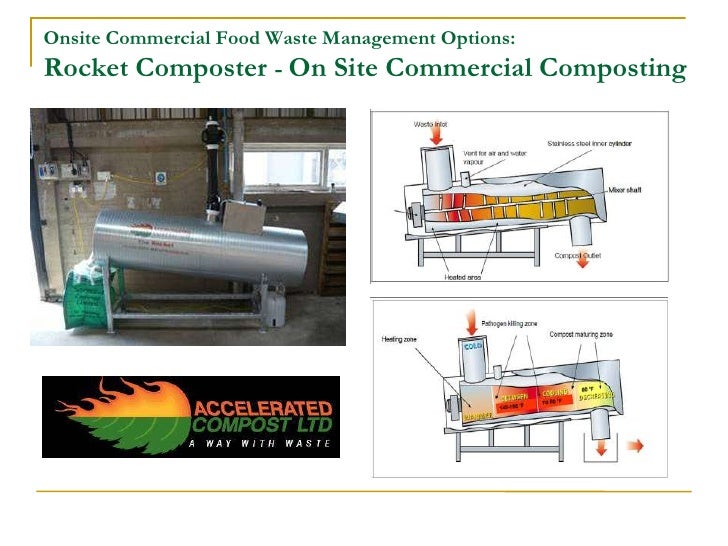Previously I went over our first step which is all about creating energy from used oil. This energy is used to power the machine for our second step, which also uses cafeteria waste.
Step Number Two
This step is 100% powered from the energy the
VegaWatt extracts from the cooking oil. Other than this, we are going to be using
mulch (brand as of yet unknown,) and
organic waste from the cafeteria. In other words, we are going to be using
leftover,
unwanted or
rotting fruits and vegetables. According to the
Food and Agriculture Organization of the United Nations, approximately
one third of the food produced in the world is thrown away. (1) In the US alone, this causes a loss of over
$680 billion. (1)
Fruits and
vegetables make up
50% of these numbers. (1) This is a lot of waste and puts a strain on our environment, as most of it ends up in a
landfill where it
cannot properly decompose and return to the earth.
What are we going to do with all this trash? Enter the
Rocket Composter, courtesy of Tiny Planet.
 |
This is our Rocket Composter, right here at BCC.
Picture by Mallory Errichetti |
This machine's origins can be traced all the way back to the
1990s, when a man by the name of
John Webb decided there must be a faster way to get nutritious compost for his plants. However, it wasn't until about
2001 while working with his son,
Simon Webb, that the first Rocket Composter, (which was then referred to as the "Webb Composter,") was invented. The new and improved device gave people a way to
dispose of their food waste in a clean and efficient way. The machine uses very
little energy and doesn't require much other than to be turned on and fed waste and water, it does the rest
all itself.
 |
This is where the VegaWatt will be connected.
Picture By Mallory |
So, how does this machine work? To understand this, we have to look at how regular composting works.
Composting is when a mixture of
water,
oxygen,
food waste, manure and
soil is mixed together and turned over
many days in order to create what looks like dirt, but what is actually a
nutrient rich mixture full of
nitrogen,
phosphorus and other elements and chemicals that help
plants thrive. This happens because thousands of naturally occurring
bacteria and micro-organisms (such as fungi or mites) break down the waste. The bacteria do this via a process called
aerobic respiration, which means they require
fresh air to continue surviving. (This is why the compost pile has to be turned daily.) This process gives off tons of heat, and can even reach
68 C)
Normally, one would have to carefully nurture their compost pile, being sure to turn it, water it, and keep its ecosystem in check. It can take weeks or months to break the materials down into a usable substance. However, the Rocket Composter speeds up this process to take only 14 days.
The Rocket keeps the compost pile in optimal conditions. It does this by constantly breaking apart and turning the materials, keeping the moisture levels high enough to water the bacteria, and temperatures hot enough to facilitate bacteria growth and consumption. As the compost moves through the process, it is gradually brought to dryer and cooler conditions in order to make it fully ready to be used as fertilizer after the 14 day period. The machine can be constantly loaded with new waste which will be added to the process efficiently.
Why Compost?
According to a
three-year study in
Vietnam via the
Science of the Total Environment journal, adding compost to soil has a wide range of
benefits to both the
plant life and the
surrounding environment. (2) Not only does it prevent
loss of water to plants such as maize (
Z. mays) by allowing their
roots to spread deeper and holding
more moisture, it also helps to
prevent erosion. (2) By doing this, it can end up reducing the amount of times
drinking water is effected by
fertilizer. (2)
(Unfortunately this compost alone is not usable soil, but rather fertilizer that can be mixed into the soil. The third step is what turns it into actual soil, which will be covered tomorrow.)
 |
Me with The Rocket
Picture by Mallory |














